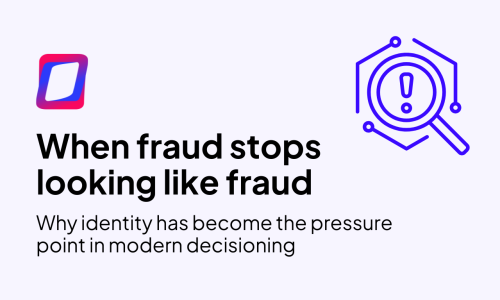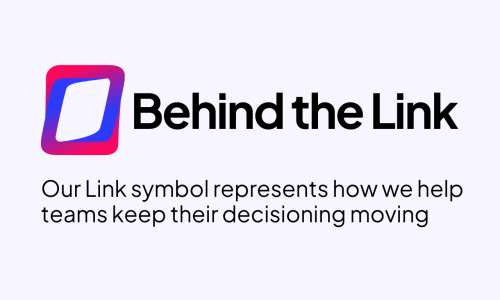How to Prevent Consumer Fraud
Consumer fraud is a constant threat, costing financial institutions billions each year in losses, chargebacks, and reputational damage. As fraud tactics become more sophisticated, so too must the tools and strategies used to detect and prevent them. At GDS Link, we enable smarter, more adaptive fraud prevention through advanced decisioning, real-time data access, and predictive modelling.
In this article, we explore what consumer fraud is, how to prevent it, and the most effective tools and techniques available today.
What is consumer fraud?
Consumer fraud involves the use of deceptive practices for financial gain. This can include identity theft, synthetic identity fraud, account takeovers, first-party fraud, phishing scams and false claims. Fraudsters often exploit gaps in verification processes or use stolen and fabricated data to gain access to financial products, services or credit.
For lenders, banks, and other financial service providers, the challenge is clear: how to distinguish legitimate customers from malicious actors, often in real-time.
How to prevent consumer fraud
Effective fraud prevention requires an agile, multi-layered strategy that responds to evolving threats in real time. Fraudsters don’t rely on one tactic, and neither should your defenses. Below, we explore the core components of a robust fraud prevention framework and how GDS Link enables financial organisations to deploy each one intelligently and at scale.
1. Layered Identity Verification
A single identity check is no longer enough. Today’s fraudsters use stolen, synthetic, or manipulated information that can bypass basic verification processes. Instead, financial institutions need to adopt layered identity verification strategies that combine multiple signals to create a fuller, more accurate picture of the applicant.
Examples include:
- Device fingerprinting – Detecting unique identifiers and behavioural patterns of the user’s device to flag anomalies or suspicious activity.
- Geolocation data – Matching IP and device location with expected user location or application data.
- Document verification – Validating official ID documents using optical character recognition (OCR), hologram checks, and tamper detection.
- Biometric analysis – Using facial recognition or voiceprints to verify identity.
- Behavioural biometrics – Analysing keystroke dynamics, typing speed, or navigation patterns to spot bots and impersonators.
How GDS Link helps:
Our platform supports integration with leading identity verification providers and enables businesses to combine multiple identity checks into a single, streamlined decision flow; all configured within a no-code environment. This allows you to customize your verification process for different products, regions, or risk thresholds.
2. Real-Time Data Analysis For Fraud Detection
Fraud decisions must be made in milliseconds. The ability to pull in and analyse data in real time is critical for spotting red flags before a transaction is approved. Static or batch data simply doesn’t cut it when dealing with dynamic threats like account takeovers, first-party fraud, or money mule activity.
Real-time data use cases include:
- Checking phone numbers and email addresses against fraud consortiums or third-party risk scores.
- Cross-referencing identity data with credit bureau records, AML watchlists, or internal blacklists.
- Verifying income and employment data to detect falsification or inconsistencies during loan applications.
- Detecting velocity patterns across multiple applications or devices.
How GDS Link helps:
Our platform allows you to ingest, transform, and analyse third-party and internal data sources in real time, using dynamic rule sets and scorecards. Whether you’re evaluating a credit application or monitoring an account post-onboarding, decisions are made instantly with data that’s always up to date.
3. Fraud Detection and Machine Learning
While rule-based systems are effective for known fraud patterns, they can’t always keep pace with new or subtle tactics. That’s where predictive modelling and machine learning become essential. These models identify patterns and anomalies that humans or static rules may miss, and they continuously learn and improve based on new data.
Applications include:
- Scoring the likelihood of synthetic identity based on behavioural and application variables.
- Detecting first-party fraud (where a genuine customer commits fraud) by combining historical repayment behaviour with social or digital signals.
- Flagging account takeovers by analysing deviations from normal usage patterns.
- Segmenting users into risk tiers and tailoring verification or approval paths accordingly.
How GDS Link helps:
With GDS Link’s Modellica platform, businesses can build, deploy, and monitor custom fraud models using their own data, or leverage our pre-built libraries. Models can be built using traditional statistical techniques or advanced machine learning, and integrated directly into your decision engine for real-time execution.
4. Custom Rules Engines
Rules still play a vital role in fraud prevention, especially when you need fast control, transparency, and explainability. However, hardcoding rules into core systems can make updates slow and rigid. A flexible custom rules engine lets you rapidly respond to fraud trends and fine-tune your defences.
Examples of useful rules include:
- Blocking applications from high-risk geographies.
- Rejecting mismatched name/address combinations.
- Limiting velocity (e.g. no more than 3 loan applications per user in 24 hours).
- Requiring additional verification based on transaction amount or unusual behaviour.
How GDS Link helps:
Our decisioning platform allows you to build and test business rules using a graphical interface, with no developer support required. You can A/B test, version-control, and deploy rules instantly, ensuring your fraud policy evolves as fast as the threats you face. This empowers fraud teams to adapt quickly, without IT bottlenecks.
Together, these four pillars form a comprehensive, intelligent approach to fraud prevention. GDS Link brings them all under one roof, giving you the flexibility to customize, the speed to respond in real time, and the intelligence to stay ahead of fraudsters.
What is the best defence against consumer fraud?
The best defence is a multi-layered, data-driven strategy that evolves in response to emerging threats. Fraudsters continually adapt, meaning static defences quickly become obsolete. An effective defence must:
- Integrate internal and external data sources
- Analyse data dynamically at the point of decision
- Adapt quickly with new rules and machine learning models
- Reduce false positives while maintaining fraud accuracy
This is where GDS Link excels, by helping businesses consolidate risk data, score consumer applications in real-time, and refine fraud strategies using predictive analytics and expert insight.
What is the most powerful tool in combating consumer fraud?
The most powerful tool is a unified decisioning platform that enables smart, automated, and explainable fraud detection. With GDS Link’s risk analytics platform, organisations gain:
- Real-time decisioning capabilities across the customer lifecycle
- Seamless integration with third-party data and fraud detection services
- Machine learning models that adapt to behavioural patterns and emerging threats
- Auditability and transparency, helping firms meet regulatory expectations while remaining agile
Rather than relying on isolated fraud detection tools, our clients benefit from a connected approach that empowers better decisions, faster – helping to protect both the business and its customers.
Fraud may be inevitable, but the damage isn’t. With GDS Link, financial institutions gain the intelligence and tools needed to stay ahead of fraudsters. Whether you’re looking to reduce chargebacks, enhance onboarding checks, or strengthen your existing fraud strategy, our configurable platform delivers results at speed and scale.
Get in touch to find out how GDS Link can help you build a smarter, stronger defence against consumer fraud.
Recent articles

When Fraud Stops Looking Like Fraud
Read article
Behind the Link
Read article





